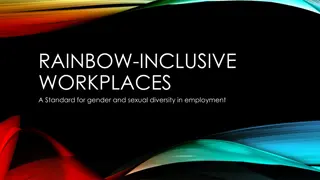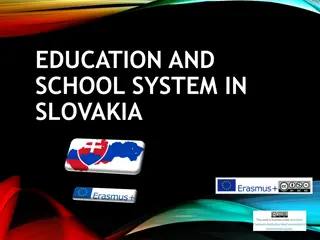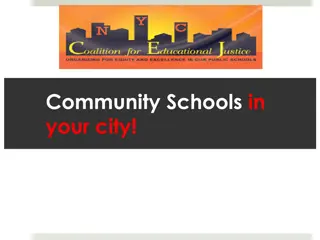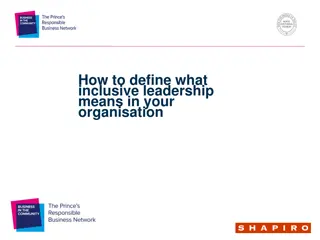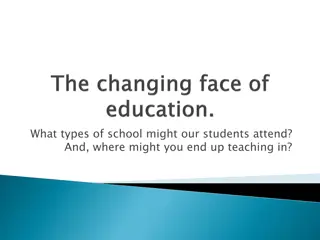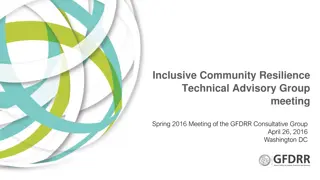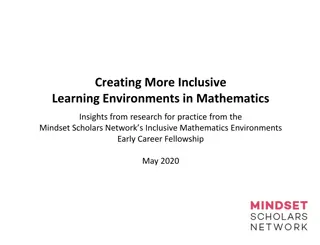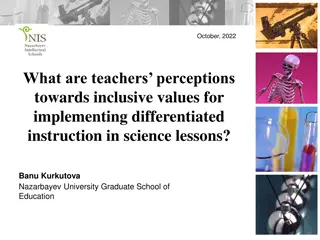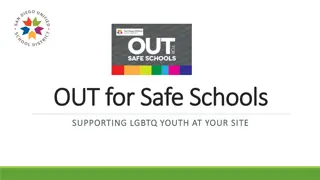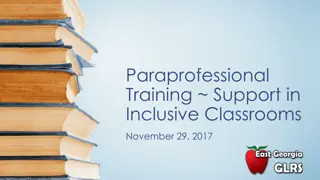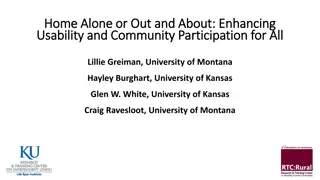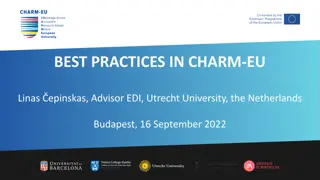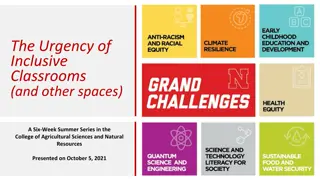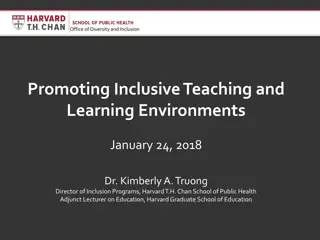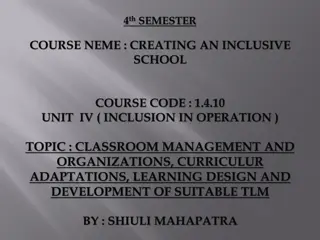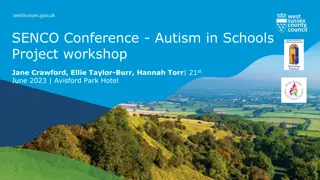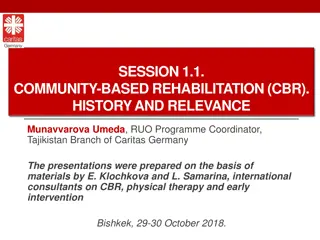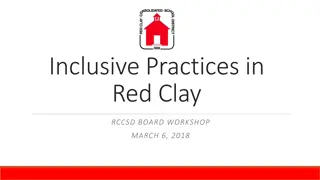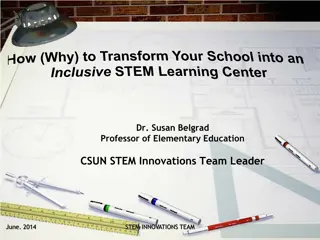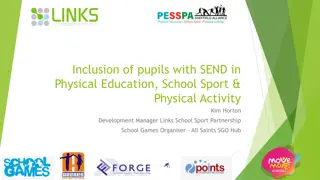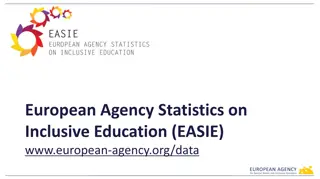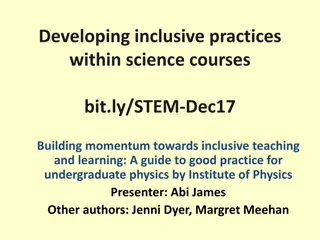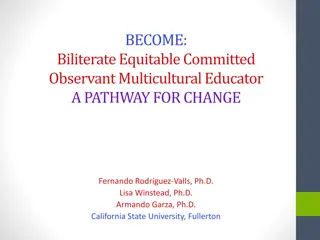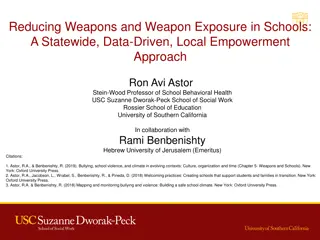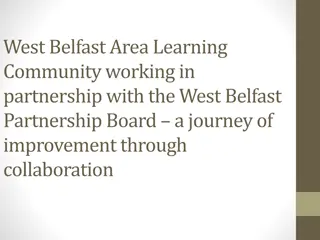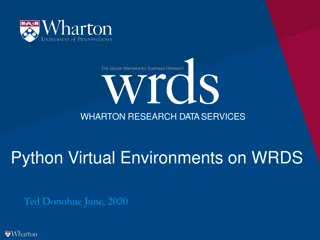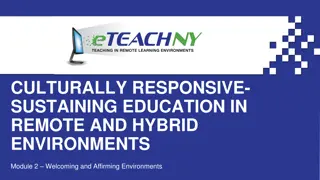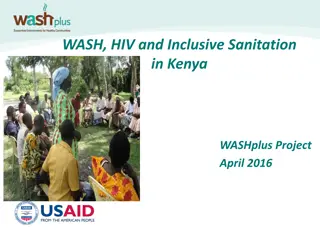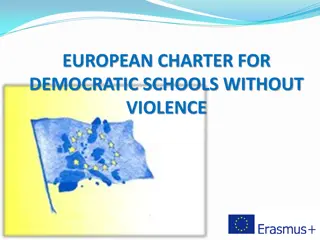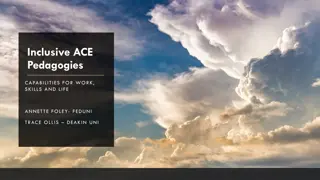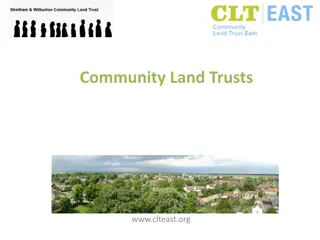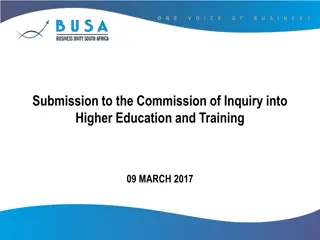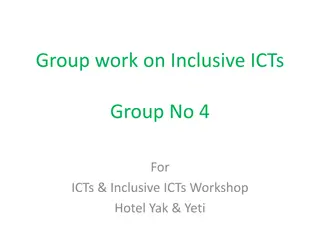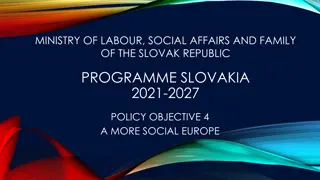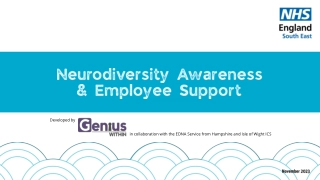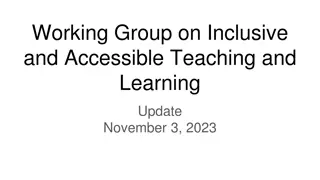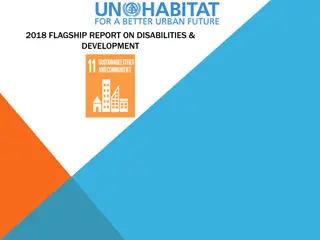Creating Inclusive Environments in Schools for LGBTQI+ Community
Creating a new Inclusion Vocabulary to promote acceptance of sexual orientation among teachers and students in high schools. Financed by the Erasmus+ Programme, this project aims to provide digital resources, training, and sensitivity for educators to foster inclusive environments. The project focuses on teaching diversity, respect, and inclusion while aiming to create positive school environments for all students, regardless of sexual orientation and gender identity.
Download Presentation

Please find below an Image/Link to download the presentation.
The content on the website is provided AS IS for your information and personal use only. It may not be sold, licensed, or shared on other websites without obtaining consent from the author. Download presentation by click this link. If you encounter any issues during the download, it is possible that the publisher has removed the file from their server.
E N D
Presentation Transcript
project number: 2020-1-PTO1-KA201-078604 Module 1 Introduction & Conclusions of the Research
Learning Objectives Understanding a bit better about the challenges from the LGTBQI+ community Learn about the findings and conclusions of the research done
Chapters 1. Introduction 2. Findings from the research done 3. Introduction to the Inclusion Vocabulary Handbook
CHAPTER 1. INTRODUCTION INCLUSION VOCABULARY Creating a new Inclusion Vocabulary to foster acceptance of sexual orientation among teachers and students in high schools Financed by the Erasmus+ Programme in 2020. 8 partners from 6 European countries. Secondary Schools, companies and non-profit organisations working together.
CHAPTER 1. INTRODUCTION Some concepts ! SOGI: Sexual Orientation and Gender Identity ! LGBTQI+ lesbian, gay, trans, bisexual, intersex and queer, to which a + sign is added to refer to all other sexual and gender diversities.
CHAPTER 1. INTRODUCTION AIMS of the project (1/2): To create positive and inclusive environments in schools for all students regardless of sexual orientation and gender identity. To accumulate teaching resources and create lesson plans that teach diversity and respect and include examples of SOGI topics. To train teachers, educators and high school students on how to foster their SOGI inclusive, social and communication skills through digital technology.
CHAPTER 1. INTRODUCTION AIMS of the project (2/2): To provide parents of students who identify themselves as LGBTQI+ with digital resources for communicating with their children in a respectful and accepting manner. To sensitise and make teachers more receptive on those issues, not only towards their students, but also towards colleagues and other members of the society who identify as LGBTQI+.
CHAPTER 1. INTRODUCTION 3 MAIN project RESULTS: New Vocabulary Handbook including terminology and resources for teachers, parents and Secondary Education students. New Vocabulary Training Course for Teachers. New Vocabulary Video Stories, on-line platform and other audiovisual resources.
Questions for self assessment What does LGBTQI+ stand for? What does SOGI stand for?
CHAPTER 2. FINDINGS FROM THE RESEARCH DONE Introduction Question to answer: how are teenagers addressed during their everyday school life by their classmates, their teachers and other school staff? 31 organisations and professionals were interviewed. 3 surveys done to collect information from 675 persons: 158 Teachers 238 Parents 279 Students
CHAPTER 2. FINDINGS FROM THE RESEARCH DONE Main findings: Students questionnaires There is a need to learn some concepts related to LGBTQI+ and SOGI. Students need to improve their awareness on inclusive language when addressing LGBTQI+ persons, fightinggender stereotypes and assumptions regarding this topic. Students should be provided with sexual education classes (ensuring they are inclusive), having all options when asked about their gender in school forms, gain trust in their teachers and their ability to handle SOGI-related bullying.
CHAPTER 2. FINDINGS FROM THE RESEARCH DONE Main findings: Teachers questionnaires There is a need for more informationand workshops on gender terminologyand inclusive communication principles (also to clarify SOGI terms). Training is advisable on the following topics: Transgenderism Sexual orientation The importance of using inclusive language The importance of discussing SOGI topics with students To increase have more tools and resources for teachers to discuss SOGI issues in class, and to be empowered to respond appropriately in bullying or peer violence due to these issues.
CHAPTER 2. FINDINGS FROM THE RESEARCH DONE Main findings: Parents questionnaires There is a need for more informationand workshops on gender terminologyand inclusive communication principles (also to clarify SOGI terms). Raising awareness on the following topics is advisable: The importance of using inclusive language The importance of teachingtheir children to behave in a respectfuland inclusive way Best practices and attitudes concerning SOGI and LGBTQI+ To increase and have more tools and resources for teachers to discuss SOGI issues in class, and to be empowered to respond appropriately in bullying or peer violence due to these issues.
CHAPTER 2. FINDINGS FROM THE RESEARCH DONE Main findings: Stakeholders interviews Training should be provided in plurality towards SOGI and co-existence. Lectures should be offeredin schools. Schools should be a safe space where students can feel comfortableidentifyingas they want and be treated with respect. Schools should also be provided with tools or training about how to deal with conflict resolution, bullying, or discrimination. Training and resources should be provided related to inclusive language and terminology in order to develop a more open and inclusive environment.
CHAPTER 2. FINDINGS FROM THE RESEARCH DONE Final conclusions: The Handbook should contain... New inclusive vocabulary How to deal with crisis Gender issues: Do s and Dont s New kinds of families and how to integrate them at school and in society
Chapter 3. Introduction to the Inclusion Vocabulary Handbook
CHAPTER 3. INCLUSION VOCABULARY HANDBOOK Topics addressed Vocabulary for Inclusion Communication principles New types of families Good practices For students For teachers For parents Good practices in school Crisis management
Resources https://www.uis.edu/gendersexualitystudentservices/students/ally-guide-uis/ally- guide-uis-dos-donts/ https://www.stonewall.org.uk/node/55084 https://www.learningforjustice.org/sites/default/files/2018-09/TT-LGBTQ-Best- Practices-Guide.pdf https://www.learningforjustice.org/sites/default/files/2019-04/TT-Speak-Up- Guide_0.pdf https://www.glsen.org/activity/respect-all-policy-recommendations-support-lgbtq- students https://ilga-europe.org/what-we-do/our-advocacy-work/education https://www.glsen.org/activity/respect-all-policy-recommendations-support-lgbtq- students


